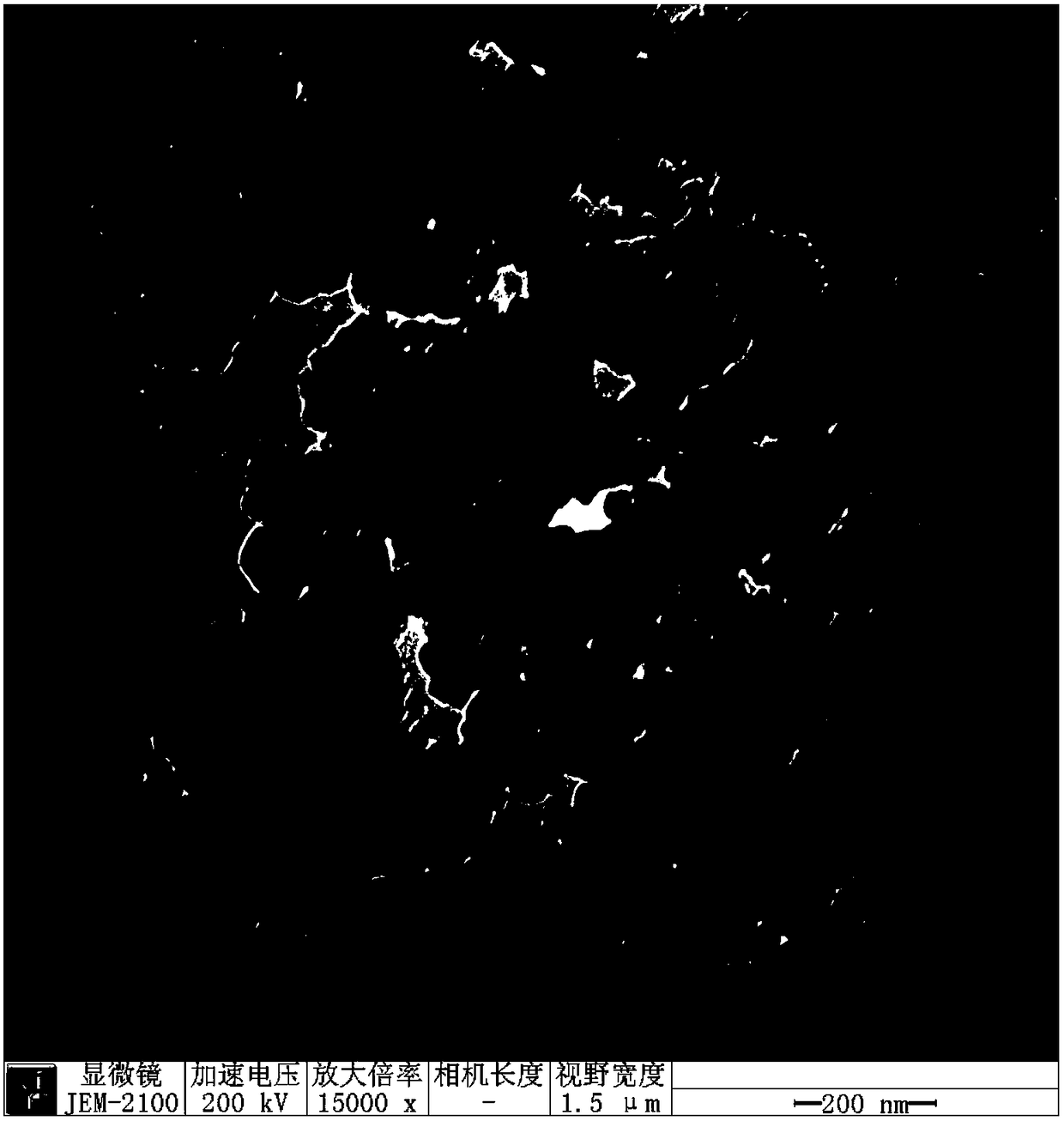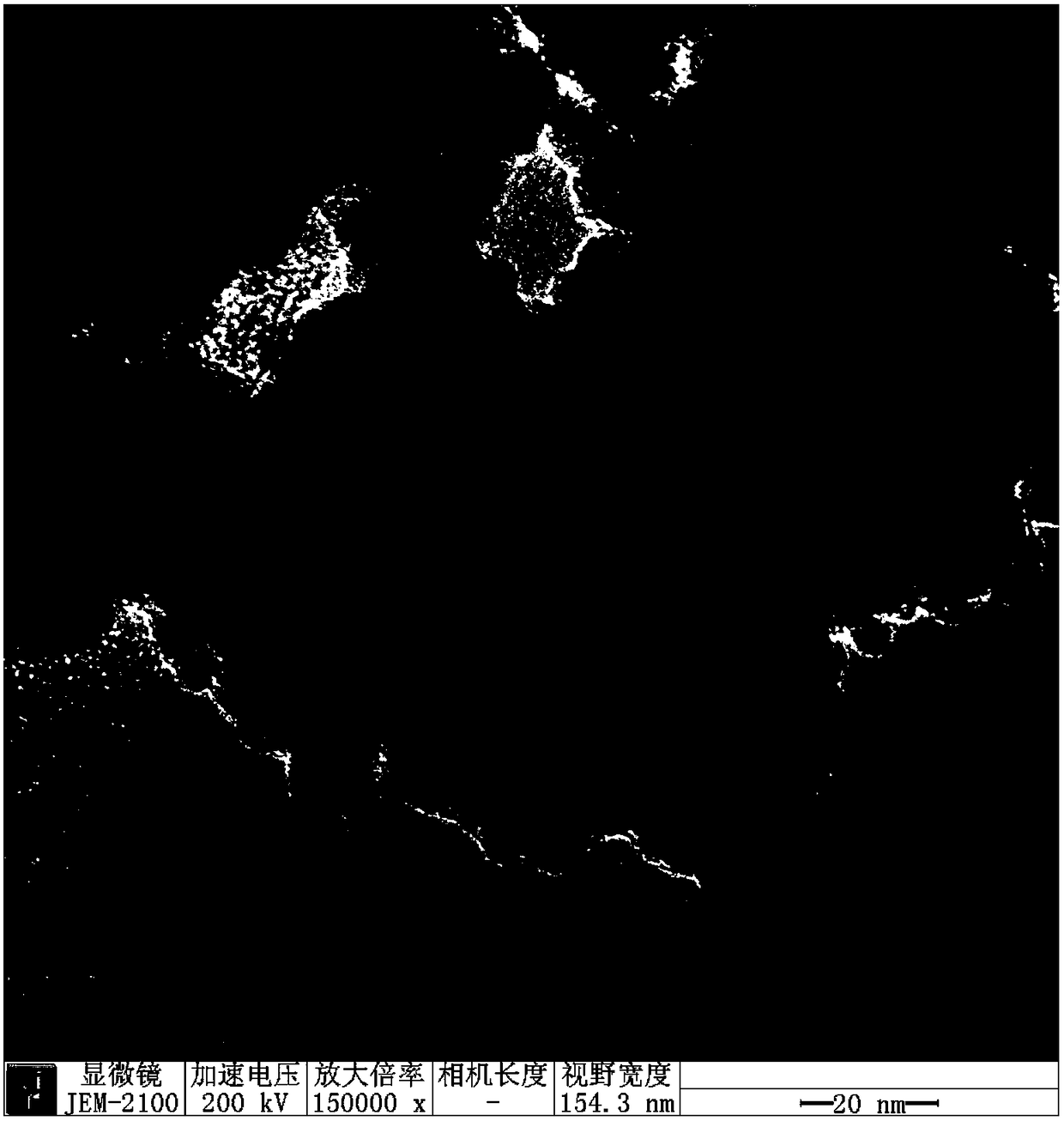A kind of preparation method of niobium nitride/cadmium sulfide composite nanoparticle photocatalyst
A composite nanoparticle and photocatalyst technology, which is applied in physical/chemical process catalysts, chemical instruments and methods, hydrogen/synthesis gas production, etc., can solve the problems of low hydrogen production efficiency, poor stability and serious photocorrosion of noble metal cocatalysts , to achieve the effect of high-efficiency visible light photocatalytic hydrogen production activity, uniform dispersion, and good photocorrosion resistance.
- Summary
- Abstract
- Description
- Claims
- Application Information
AI Technical Summary
Problems solved by technology
Method used
Image
Examples
specific Embodiment approach 1
[0038] Embodiment 1: This embodiment is a preparation method of niobium nitride / cadmium sulfide composite nanoparticle photocatalyst, which is completed according to the following steps:
[0039] 1. Preparation of niobium nitride precursor: at a temperature of 25°C to 35°C, mix niobium pentoxide and a solid base evenly and place it in a muffle furnace at a temperature of 300°C to 600°C for 2h to 6h , to obtain a roasted product; add water at a temperature of 100°C to the roasted product, and then filter to remove the filter residue to obtain a filtrate; add concentrated acid dropwise to the filtrate at a rate of 10 mL / min to 15 mL / min to obtain a precipitate A ; Wash the precipitated substance A for 3 to 5 times with distilled water, and then dry it in an electric blast drying oven at a temperature of 50°C to 100°C for 6h to 12h to obtain a niobium nitride precursor;
[0040] The molar ratio of niobium pentoxide and solid base described in step 1 is (1~5):10;
[0041]The temp...
specific Embodiment approach 2
[0060] Embodiment 2: The difference between this embodiment and Embodiment 1 is that the solid base described in step 1 is one of sodium hydroxide, potassium hydroxide, sodium carbonate and potassium carbonate or a mixture of several of them. Other steps are the same as in the first embodiment.
specific Embodiment approach 3
[0061] Embodiment 3: The difference between this embodiment and Embodiment 1 or 2 is that the molar ratio of niobium pentoxide to solid base in step 1 is 1:10. Other steps are the same as those in Embodiment 1 or 2.
PUM
| Property | Measurement | Unit |
|---|---|---|
| specific surface area | aaaaa | aaaaa |
| size | aaaaa | aaaaa |
| size | aaaaa | aaaaa |
Abstract
Description
Claims
Application Information
 Login to View More
Login to View More - R&D
- Intellectual Property
- Life Sciences
- Materials
- Tech Scout
- Unparalleled Data Quality
- Higher Quality Content
- 60% Fewer Hallucinations
Browse by: Latest US Patents, China's latest patents, Technical Efficacy Thesaurus, Application Domain, Technology Topic, Popular Technical Reports.
© 2025 PatSnap. All rights reserved.Legal|Privacy policy|Modern Slavery Act Transparency Statement|Sitemap|About US| Contact US: help@patsnap.com



